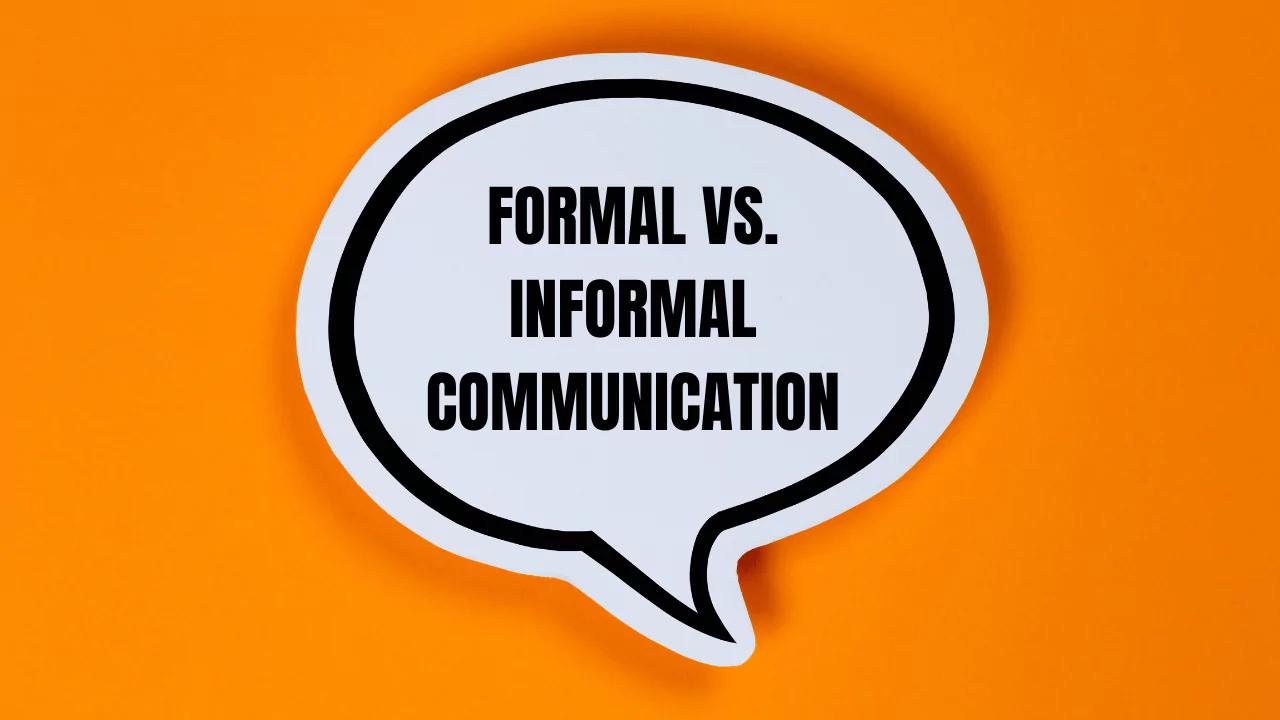When it comes to communication, there are two main approaches: formal and informal. While both have their purposes, understanding the differences between them is crucial to effectively convey messages and build relationships.
In this article, we will delve into the contrast between formal and informal communication, exploring their definitions, key differences, advantages, disadvantages, and examples.
Definition of Formal and Informal Communication
Formal communication refers to official, structured exchanges that follow established protocols. It prioritizes clarity, accuracy, and a professional tone. Informal communication, on the other hand, is characterized by its relaxed, spontaneous nature. It often uses everyday language and allows for a more personal touch.
Types of Formal Communication
Formal communication takes various forms, serving distinct purposes:
- Written Communication: Business letters deliver important information or proposals. Reports document data, findings, or recommendations. Emails provide a clear and concise way to transmit messages or request information. Presentations effectively convey complex information to an audience, often using visuals and data. Official company documents, like policies or procedures, establish clear guidelines and expectations.
- Meetings and Conferences: Formal meetings with colleagues facilitate structured discussions and decision-making. Presentations to stakeholders clearly communicate ideas or proposals to secure approval or investment. Industry conferences offer opportunities to share knowledge, network with professionals, and stay updated on industry trends.
Types of Informal Communication
Informal communication also has diverse channels, fostering different dynamics:
- Spoken Communication: Face-to-face conversations with colleagues allow for quick exchanges, clarification of questions, and building rapport. Casual emails or instant messages provide a more relaxed way to share updates, ask for quick favors, or have brief discussions.
- Social Interactions: Social media interactions within a professional context can be used for networking, sharing industry news, or building a personal brand. Casual conversations during breaks or team lunches offer opportunities for informal relationship building, fostering a sense of team spirit, and potentially sparking creative ideas.
Key Differences Between Formal and Informal Communication
Several key factors differentiate formal and informal communication:
- Method of communication: Formal communication typically occurs through well-defined channels like written documents or planned meetings. Informal communication thrives in spontaneous interactions, like chats with colleagues or social gatherings.
- Structure and language used: Formal communication adheres to a clear structure, often following a specific format. Language is precise, and objective, and avoids slang or colloquialisms to ensure clarity and professionalism. Informal communication allows for a more flexible structure and embraces everyday language, including humor or personal anecdotes, to create a more relaxed atmosphere.
- Level of formality: The level of formality is a defining characteristic. Formal communication maintains a professional and respectful tone, often using titles and addressing individuals respectfully. Informal communication allows for a more relaxed and casual tone, potentially using humor or nicknames to build rapport.
- Use of hierarchy: Formal communication often respects hierarchical structures. Communication may flow through designated channels or require approval from superiors to maintain order and ensure proper dissemination of information. Informal communication, on the other hand, is less bound by hierarchy and can occur freely between colleagues or friends, fostering a more collaborative environment.
Advantages and Disadvantages of Formal and Informal Communication
Both formal and informal communication offer distinct advantages and disadvantages:
Formal Communication Advantages:
- Clarity and Accuracy: Structured communication minimizes misunderstandings and ensures clear information exchange. Documentation in the form of reports, emails, or meeting minutes serves as a reliable record for future reference.
- Professionalism: It fosters a professional environment, maintaining respect and decorum during important discussions or presentations.
- Control and Accountability: Defined channels ensure information reaches the intended audience, with clear lines of accountability for actions or decisions.
Formal Communication Disadvantages:
- Slowness: Following protocols and approvals can lead to delays in communication, especially for time-sensitive matters.
- Impersonal: The focus on structure and professionalism can make communication feel impersonal, potentially hindering rapport building.
- Limited Creativity: Strict adherence to formalities may stifle creative expression, hindering brainstorming sessions or innovative problem-solving.
Informal Communication Advantages:
- Speed and Efficiency: Ideas and information can be exchanged quickly and directly, allowing for faster decision-making or problem-solving.
- Relationship Building: The relaxed nature fosters rapport and builds stronger relationships between colleagues, leading to better teamwork and collaboration.
- Creativity and Innovation: The freedom of expression allows for brainstorming and creative problem-solving, potentially leading to new ideas or approaches.
Informal Communication Disadvantages:
- Lack of Clarity: The absence of a clear structure or defined channels can lead to misunderstandings or incomplete information, requiring clarification or re-communication.
- Unreliable Information: Rumors and misinformation can spread quickly through informal channels, potentially causing confusion or impacting decision-making.
- Lack of Accountability: The casual nature can make it difficult to pinpoint responsibility for actions or decisions, hindering accountability.
Examples of Formal and Informal Communication
Formal Communication Examples:
- A company-wide meeting to discuss quarterly results
- A formal email from a manager to an employee regarding performance
- A written proposal for a new project
Informal Communication Examples:
- A conversation between colleagues during lunch
- A social media post from a company account
- A spontaneous meeting between team members to discuss an idea



